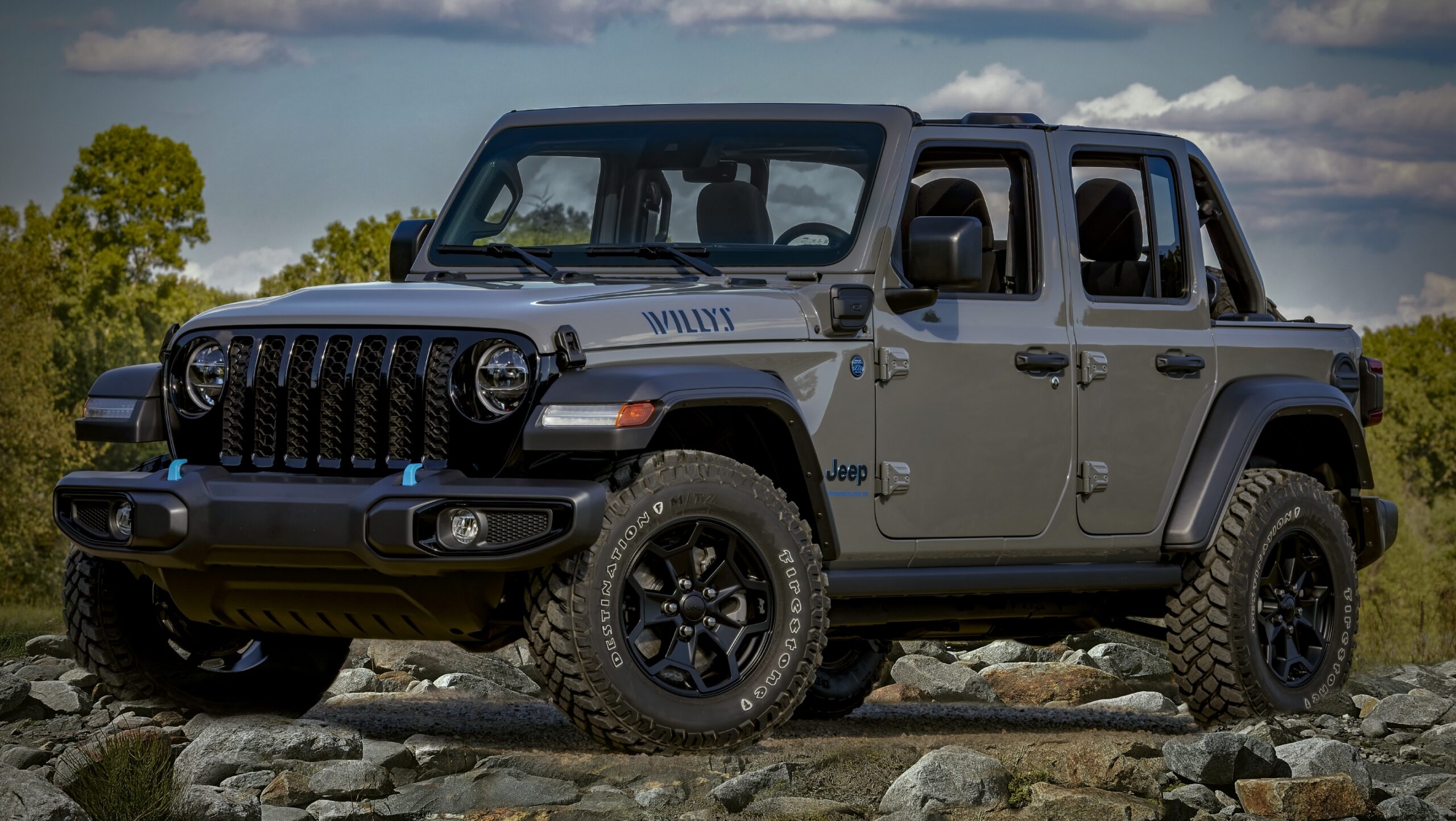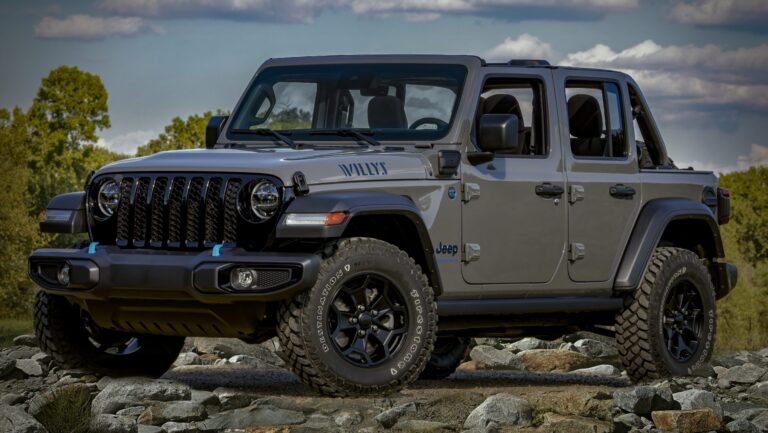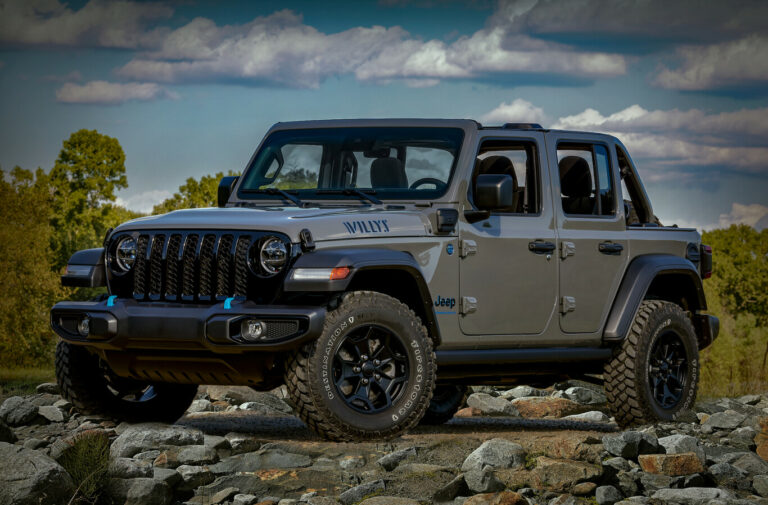Jeep 360 Motor For Sale: Your Comprehensive Guide to Finding the Perfect Powerplant
Jeep 360 Motor For Sale: Your Comprehensive Guide to Finding the Perfect Powerplant jeeps.truckstrend.com
The roar of a V8 engine in a classic Jeep is more than just a sound; it’s a statement, a testament to raw power and a bygone era of robust engineering. Among the pantheon of iconic Jeep engines, the AMC 360 cubic inch (5.9L) V8 holds a particularly revered place. Known for its ample low-end torque, straightforward design, and enduring reliability, the AMC 360 powered a host of full-size Jeeps for decades, from the J-series pickups and Wagoneers to the beloved CJ and Scrambler models (in later years, often through swaps).
For enthusiasts looking to restore a vintage Jeep, undertake a powerful engine swap, or simply keep a classic alive, a "Jeep 360 Motor For Sale" is often the holy grail. This comprehensive guide will delve into everything you need to know about acquiring, assessing, and understanding this legendary engine, ensuring you make an informed decision for your next project.
Jeep 360 Motor For Sale: Your Comprehensive Guide to Finding the Perfect Powerplant
The Enduring Legacy of the AMC 360 V8
Born from American Motors Corporation (AMC) in 1970, the AMC 360 V8 was a core part of their engine lineup, powering everything from passenger cars to, most notably, their Jeep vehicles. It was a staple in models like the Jeep Grand Wagoneer, J-Series pickups, Cherokee (SJ), and even the CJ series (particularly for swaps or limited factory runs, though the 304 V8 was more common). Production for Jeep applications continued until 1991, making it one of the longest-running engines in Jeep history.
What makes the AMC 360 so enduringly popular?
- Robust Design: Featuring a heavy-duty cast-iron block and heads, the 360 was built to last and withstand considerable abuse, making it ideal for the demanding life of a truck or SUV engine.
- Torque Monster: Its V8 configuration and generous displacement ensured strong low-end torque, perfect for off-road crawling, towing, and getting heavy vehicles moving with authority. Stock horsepower figures typically ranged from 125-195 HP, with torque often exceeding 245 lb-ft, depending on the year and carburetion.
- Simplicity: Compared to modern, computer-controlled engines, the AMC 360 (especially carbureted versions) is relatively simple to diagnose and repair, making it a favorite for DIY mechanics and classic vehicle enthusiasts.
- Aftermarket Support: Due to its popularity, a vast array of aftermarket parts, performance upgrades, and conversion kits are readily available, allowing for everything from mild rebuilds to significant power boosts.
- Distinct V8 Sound: There’s no mistaking the rumble of a classic V8, and the AMC 360 delivers that satisfying exhaust note that many enthusiasts crave.

It’s crucial to note that the AMC 360 is distinct from the Chrysler (Mopar) 360 V8. While both are 360 cubic inch engines, they are entirely different designs and are not interchangeable without significant modifications. When searching, always specify "AMC 360" to avoid confusion.
Why Buy a Jeep 360 Motor? Common Applications & Benefits
The decision to purchase an AMC 360 motor often stems from specific project goals. Here are the most common reasons and the benefits they offer:

- Authentic Restoration: For owners of classic Grand Wagoneers, J-series trucks, or SJs, finding an original AMC 360 is key to maintaining the vehicle’s authenticity and value.
- Engine Swaps for Enhanced Performance: Many CJ, YJ, or even XJ (Cherokee) owners with smaller inline-4 or inline-6 engines seek out the 360 for a significant power upgrade. The added torque makes these lighter Jeeps formidable off-road machines.
- Off-Road Prowess: The low-end torque characteristics of the 360 are perfectly suited for rock crawling and tackling challenging terrain where grunt, not high RPM horsepower, is paramount.
- Towing Capability: For those using their classic Jeep for utility, the 360 provides the necessary power to comfortably tow trailers, boats, or other equipment.
- DIY Friendly: Its mechanical simplicity means that owners with basic mechanical skills can often perform maintenance and even some rebuilds themselves, saving on labor costs.
- Cost-Effective Power: Compared to buying and adapting modern crate engines, a well-chosen AMC 360 can offer excellent power-to-cost value, especially if you’re willing to do some of the work yourself.

What to Look For When Buying a Jeep 360 Motor (Inspection Guide)
Acquiring a used engine, especially one decades old, requires careful consideration. Here’s a detailed inspection guide:
1. Source and Seller Reputation:
- Reputable Salvage Yards: Often pull engines, test them (if running), and may offer limited warranties.
- Specialized Jeep Parts Dealers: These often rebuild or test engines more thoroughly and understand the nuances of the AMC V8.
- Online Marketplaces (eBay, Facebook Marketplace, Craigslist): High risk, but potentially good deals. Verify seller reputation, ask for detailed photos/videos.
- Private Sellers: Ask for their reason for selling, vehicle history, and be wary of "too good to be true" prices.
2. Condition: Running vs. Core:
- Running Engine (Pulled from a running vehicle): Best-case scenario. Ask for a video of it running, check for smoke, strange noises, and oil pressure. A compression test is crucial.
- Core Engine (Non-running, for rebuild): Expect to completely tear it down and rebuild it. Price should reflect this. Focus on the integrity of the block and heads.
3. Visual Inspection (External):
- Cracks: Inspect the block and cylinder heads meticulously for any visible cracks, especially around freeze plugs, exhaust ports, and mounting points. Cracks are often deal-breakers.
- Rust: Surface rust on the exterior is common and usually not an issue. Excessive rust, especially around water jackets or oil passages, indicates neglect or prolonged outdoor storage.
- Oil Leaks: Look for excessive oil grime or drips around valve covers, oil pan, front/rear main seals, and intake manifold. While some leaks are normal for old engines, excessive leaks suggest worn seals or neglected maintenance.
- Signs of Overheating: Look for discolored paint on the block/heads (blueish tint), warped exhaust manifolds, or coolant residue. Overheating can warp heads or crack blocks.
- Mounting Points: Ensure all mounting points for accessories (alternator, power steering, AC compressor) and engine mounts are intact and not damaged.
4. Internal Inspection (if possible):
- Oil Pan: If the pan can be removed, check for excessive sludge, metal shavings, or coolant in the oil – all red flags.
- Spark Plugs: Pulling a few spark plugs can reveal cylinder health. Oily plugs suggest worn rings/valve guides; fouled plugs indicate fuel/ignition issues.
- Crankshaft/Connecting Rods: If the engine is disassembled, inspect bearing surfaces for scoring or discoloration.
5. Compression Test (for running engines):
- Crucial: A compression test indicates the health of the piston rings and valves. All cylinders should have consistent readings, ideally within 10-15% of each other. Low or widely varying compression indicates internal wear or damage.
6. Completeness and Accessories:
- Does the engine come with a carburetor (or fuel injection system), intake manifold, exhaust manifolds, distributor, alternator, power steering pump, and motor mounts? A complete running pull-out will cost more but save you time and money sourcing components.
7. Documentation and History:
- Ask for any available history, mileage (though often unreliable for old engines), and maintenance records. While rare, any documentation adds value.
Types of Jeep 360 Motors Available & Pricing Factors
The price and condition of an AMC 360 motor for sale vary widely based on several factors:
-
Used/Salvage Pull-Out:
- Description: An engine removed directly from a donor vehicle, sold "as-is." May or may not be running.
- Pros: Cheapest option, potentially a quick solution if running well.
- Cons: Highest risk, unknown internal condition, no warranty. Likely needs new gaskets, seals, and a thorough inspection before installation.
- Price Factor: Condition (running vs. non-running), completeness, mileage (if known).
-
Rebuilt/Remanufactured Engine:
- Description: An engine that has been professionally disassembled, inspected, machined (if necessary), and reassembled with new components (bearings, rings, gaskets, seals, often pistons, camshaft, etc.).
- Pros: Much lower risk, comes with a warranty (typically 90 days to 1 year), known good condition.
- Cons: Significantly more expensive than a used pull-out.
- Price Factor: Extent of rebuild, new vs. reconditioned parts, warranty length, reputation of the rebuilder.
-
Crate Engine (Less Common for AMC 360):
- Description: A brand-new or extensively rebuilt engine from a specialized manufacturer, often with performance upgrades.
- Pros: Brand new, highest quality, maximum performance (if upgraded), long warranty.
- Cons: Most expensive option, fewer readily available options for AMC 360 compared to popular Chevy/Ford V8s.
- Price Factor: Performance level, brand, warranty.
-
Completeness:
- Long Block: Block, crankshaft, rods, pistons, camshaft, cylinder heads, valve train. (No intake, exhaust, accessories).
- Short Block: Block, crankshaft, rods, pistons. (No heads, intake, exhaust, accessories).
- Complete Running Pull-Out: Engine with most accessories (carburetor, distributor, manifolds, etc.).
Table Price: Estimated Jeep 360 Motor Costs
Please note: These are estimated prices based on current market trends and can fluctuate significantly based on location, seller, condition, and included components. Always verify with the seller.
| Condition/Type of Motor | Inclusions | Estimated Price Range (USD) | Notes / Typical Warranty |
|---|---|---|---|
| Used/Salvage Pull-Out | Long block, often with intake/exhaust manifolds, some accessories. | $500 – $1,500 | "As-is," no warranty. Best for core or budget projects. |
| Running Used Pull-Out | Complete engine, sometimes with carburetor, distributor, accessories. | $1,000 – $2,500 | "As-is," limited or no warranty. Ask for video/test. |
| Basic Rebuilt Long Block | Professionally rebuilt block, crank, rods, pistons, heads. No external parts. | $2,500 – $4,000 | 90-day to 6-month warranty typical. |
| Professionally Rebuilt Complete Engine | Rebuilt long block plus reconditioned or new carburetor, distributor, oil pump, water pump, etc. | $4,000 – $6,500+ | 6-month to 1-year warranty standard. Higher quality parts. |
| Performance Build/Crate Engine | Custom built with performance cams, heads, intake; often fuel injected. | $7,000 – $12,000+ | Varies greatly by builder and specs. Longer warranty. |
Shipping costs are additional and can be substantial for an engine.
Installation & Compatibility Considerations
Buying the engine is just the first step. Installing it, especially as a swap, requires careful planning:
- Vehicle Compatibility: While the AMC 360 was factory in many full-size Jeeps (Grand Wagoneer, J-series, Cherokee SJ), swapping it into CJs, YJs, or XJs requires more work.
- Transmission Mating: The AMC 360 typically bolted up to AMC-specific transmissions like the T-176, T-18, TH400, or TF727 automatic. Swapping to a modern transmission (e.g., AX-15, NV3550, NV4500) will require an adapter kit from companies like Advance Adapters or Novak Conversions.
- Engine Mounts: You’ll need specific engine mounts to fit the 360 into your chassis. Swap kits usually include these.
- Fuel System: If your vehicle was carbureted, a 360 swap might be straightforward. If it was fuel injected, you’ll either need to convert the 360 to EFI (recommended for reliability and efficiency) or convert your vehicle’s fuel system to a carbureted setup.
- Exhaust System: Custom exhaust fabrication is often necessary to clear the frame, steering, and suspension components.
- Cooling System: The 360 generates more heat than smaller engines. An upgraded radiator, fan shroud, and possibly an electric fan setup are crucial to prevent overheating.
- Electrical System: Integrating the 360’s wiring (especially the distributor, alternator, starter) into your vehicle’s harness will require electrical knowledge. EFI conversions are more complex.
- Drivetrain Strength: Ensure your axles, driveshafts, and transfer case can handle the increased torque and power of the 360. Upgrades may be necessary to prevent breakage.
- Emissions Regulations: Check your local and state emissions laws. Swapping an older engine into a newer vehicle, or vice-versa, can pose legal challenges.
- Tools & Skills: An engine swap is a significant undertaking. Be realistic about your mechanical skills, available tools, and workspace. Consider professional installation if you’re unsure.
Tips for a Successful Purchase and Project
- Set a Realistic Budget: Don’t just budget for the engine. Account for shipping, transmission adapters, motor mounts, exhaust, cooling system upgrades, fuel system changes, and potential rebuild costs.
- Do Your Homework: Research common issues with the AMC 360, compatibility with your specific vehicle, and necessary swap components.
- Ask Lots of Questions: Don’t be shy with the seller. Get as much information as possible about the engine’s history, condition, and what’s included.
- Get it in Writing: If there’s a warranty or return policy, ensure it’s clearly stated in writing.
- Plan Ahead: Have all necessary parts and adapters on hand before you begin the swap to minimize downtime.
- Consider a Professional Inspection: If buying a running used engine from a distance, consider hiring a local mechanic to inspect it for you.
- Join Forums and Communities: Online Jeep forums (e.g., JeepForum, Pirate4x4) are invaluable resources for advice, troubleshooting, and finding parts.
Frequently Asked Questions (FAQ) about the Jeep 360 Motor
Q1: Is the AMC 360 a good engine for off-roading?
A1: Absolutely! Its strong low-end torque is ideal for rock crawling and challenging terrain where power at low RPMs is crucial. It’s also relatively simple and robust, making it reliable in demanding conditions.
Q2: What Jeep models originally came with the AMC 360?
A2: The AMC 360 was factory installed in many full-size Jeep vehicles, including the Jeep Grand Wagoneer, J-Series pickups (J10, J20), and Cherokee (SJ) models from the 1970s through 1991. While less common, some CJ models had factory V8s (mostly 304s), and the 360 was a popular swap candidate.
Q3: How much horsepower and torque does a stock AMC 360 have?
A3: Stock figures varied significantly by year and carburetion, but generally ranged from 125-195 horsepower and 245-295 lb-ft of torque. These numbers can be greatly improved with modern carburetors/EFI, ignition upgrades, and exhaust systems.
Q4: Can I put an AMC 360 in my CJ7 or YJ?
A4: Yes, it’s a very popular and well-documented swap. However, it’s not a direct bolt-in. You’ll need specific engine mounts, a transmission adapter, cooling system upgrades, and often exhaust fabrication. Numerous aftermarket kits are available to facilitate this swap.
Q5: What’s the difference between an AMC 360 and a Mopar (Chrysler) 360?
A5: They are entirely different engines. The AMC 360 was designed and produced by American Motors Corporation, while the Mopar 360 (5.9L Magnum) was a Chrysler engine. They have different block designs, bolt patterns, and internal components and are not interchangeable without significant custom fabrication. Always specify "AMC 360" when searching for parts.
Q6: Should I buy a rebuilt or used AMC 360?
A6: This depends on your budget, mechanical skill, and risk tolerance. A professionally rebuilt engine offers peace of mind and a warranty but costs more. A used engine is cheaper but carries higher risk and will likely require a full rebuild sooner rather than later. For a reliable, long-term solution, a rebuilt engine is often the better investment.
Q7: Are parts readily available for the AMC 360?
A7: Yes, due to its long production run and popularity, many parts for the AMC 360 are still readily available, including gaskets, seals, bearings, pistons, camshafts, and cylinder heads from various aftermarket suppliers.
Conclusion
The "Jeep 360 Motor For Sale" represents more than just an engine; it’s an opportunity to infuse classic Jeeps with their rightful V8 rumble and robust performance. Whether you’re undertaking a faithful restoration, seeking a powerful swap for your off-road rig, or simply cherishing the simplicity of an analog engine, the AMC 360 offers a compelling package.
By understanding its legacy, knowing what to look for during inspection, being aware of pricing factors, and planning meticulously for installation, you can successfully acquire and integrate this iconic powerplant. The journey may require effort and dedication, but the rewarding sound and feel of an AMC 360 V8 powering your Jeep are undoubtedly worth it, ensuring its enduring legacy lives on for miles to come.







